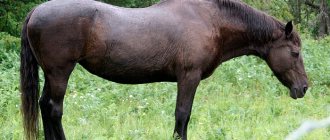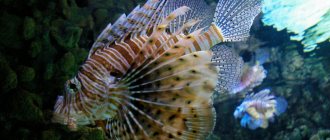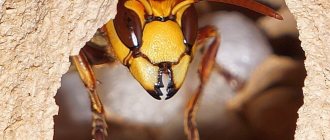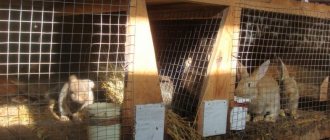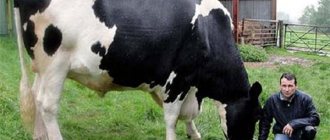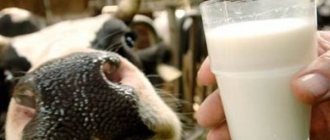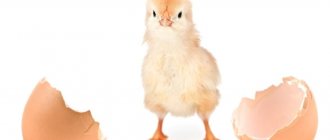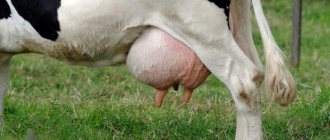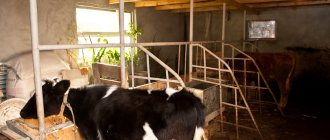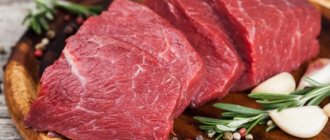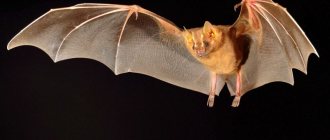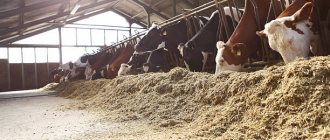Horses sleep soundly in this position. It is believed that during this period the animal is very vulnerable, since it takes some time to fully awaken. Deep sleep is characterized by smooth and noisy breathing. Sometimes you can hear snoring near the stables. Eyeballs and limbs may move. The latter allowed scientists to assume that graceful animals dream.
Attention! The horse can remain lying on its side for no more than 4 hours. If you increase the time to 6 hours, the animal develops pulmonary edema. The reason for this is considered to be heavy weight and anatomical features.
Horses relax with a feeling of complete safety. For example, in a herd there is hope for relatives, and in a stable - for the owners. A few hours a day is enough for them to regain strength and be ready for action again.
The question of how horses sleep is of interest to breeders planning to own these noble animals. The main thing is to provide your pets with a feeling of safety and then the rest will be complete.
Read also: Cow's milk: harm and benefit
Where does the zebra sleep?
Baby elephants often sleep on their sides. Zebras. Like domestic horses, zebras can sleep in two positions - lying down and standing. In the first case, the head is placed on branches or a haystack, as if on a pillow; in the second, on the croup.
Interesting materials:
How long does it take for swelling to go away after a bee sting? How long does a human hair wig last? How long does it take for a suspended ceiling to dry after flooding? How long to hold the bar? How long does it take for casein to be digested? How long should you cook cauliflower before roasting? How long to wait for retirement? How long does it take to get a passport? How to preserve chrysanthemums longer? How to keep lilies in a vase longer?
Short description
A cow is a female animal of any type of cattle; a male animal is called a bull. Among the domesticated subspecies of the wild bull (Bos taurus), dairy, meat and meat-dairy breeds are identified.
Physical data and nutrition
The average weight of a cow is almost 750 kg, height at the withers is up to 150 cm, depending on the breed and individual characteristics. As a rule, bulls significantly exceed females in weight and height.
The basis of the diet is plant food, the stomach consists of 4 sections. This structure of the digestive system ensures the functioning of the important process of chewing gum. After the eaten food returns to the oral cavity, the animal chews it thoroughly, then it again returns to the anterior sections of the stomach.
Hierarchy
As a rule, cows are herd species; their behavior is based on a dominant hierarchy. This system of life activity is formed on the basis of conflicts and clashes between individuals of the herd; the animals gradually get used to living together and this way of life does not change anymore. Sometimes there are cases where a leader emerges without a hierarchical system. Such an individual has excellent terrain orientation and sets the direction of movement of the rest of the herd members.
Aftercare
The appearance of swelling at the site of surgery is a completely natural process. The swelling decreases within a week, but for this the animal will need to be provided with proper care. At this time, it is very important to maintain hygiene and frequently clean the area where the cow sleeps.
While the cow is recovering, she is under strict veterinary supervision. The animal is kept in a separate stall, contacts with other individuals in the livestock and the environment are excluded. There are no exceptions for feeding and milking. Milking is carried out in a standard manner, the diet is the same as before the operation.
The best time for surgery is spring or autumn, when it is not very hot, but warm and there are no flies or other pests. The hole in the animal's body remains until the last day of life.
In Europe, such operations have been carried out for a very long time. On large farms, installing a fistula helps keep the livestock healthy. In our country, individuals with such a hole evoke pity and interest; sometimes excursions are even organized on farms. No matter how strange it may sound, on some farms spectators are even allowed to independently extract food from the cow’s stomach, however, such an attraction is not very popular.
Swiss veterinarians do not believe that a hole in an animal's stomach should cause criticism from animal rights activists. So that people correctly understand why this is being done, a detailed description of the procedure is given. On large farms, where every individual counts, this is more likely to save the cow than cause harm.
Selecting a location
Adults prefer to be in a quiet and secluded place. There is no bright light or drafts here, but there is optimal humidity. The choice of such a space is influenced by the temperature regime. Cows love secluded corners where the temperature does not exceed +22 degrees.
If animals are kept indoors, the rest area should be equipped with dry straw or wooden flooring. On large farms, large individuals are not tied to the stall. For this purpose, special large courtyards were provided in which females and males can rest for 5 hours.
To keep cattle at home, special sheds must be equipped. For one individual you need 8 sq.m. free space. The eating area and resting area should be isolated from each other. The cow is not tied up at night or while eating.
Beginning farmers are advised to observe the animal when it chooses a resting place. In the future, this corner or space is equipped with soft straw, sawdust or dry grass. Attention must be paid to cleaning and cleanliness. The fact is that increased humidity and dirt provoke the spread of pathogenic microflora. These microorganisms negatively affect the animal's immune defense and reduce its productivity.
Why do cows like silence?
Cattle prefer the absence of sharp sounds during sleep. During their night rest, animals need complete silence. This requires not to perform any activities for 4 hours after feeding.
Experienced farmers do not recommend cleaning the premises, cleaning feeders or replacing feed during sleep. After awakening, the animal becomes less aggressive and pliable. To normalize the cow’s mental state, it is enough to adhere to a certain schedule. The animal must be fed at the same time, walked for 3 hours and milked 4 hours before bedtime.
Regular stress and lack of comfortable living conditions provoke frequent illnesses and worsen the taste of animal products.
Why is this necessary?
In a cow, most of the abdominal cavity is the so-called rumen. The volume of this section of the stomach is 200 liters. When food enters the mouth, it is first chewed, then enters the esophagus, and from there into the rumen. This is where breakdown occurs under the influence of microorganisms and bacteria.
Grass and other foods in the diet are crushed thanks to the action of the proventriculus. From the described section, the food passes into the mesh, where filtering occurs, the liquid goes further, and large parts again enter the mouth and the process repeats.
When overeating juicy clover, the animal stops regurgitating food, which needs to be experienced again . As a result , fermentation is disrupted and food is not broken down as required. With such a pathology, a large amount of gases is formed in the cow’s stomach, and in the absence of first aid, such a condition often ends in death. To save an individual, the veterinarian has to puncture the scar with a needle, which causes severe pain.
There is another problem with digestion - acidosis. With this disease, a large amount of lactic acid begins to accumulate in the stomach; it must be removed through a tube using lavage. Afterwards, the microflora must be normalized; for this, the contents of the rumen from another donor cow are used. Medicines along with donor material have to be administered through the hole; You can also take it by mouth, but using a probe.
If there is an imbalance in a cow's diet, the rumen reacts most acutely to this. Its work is disrupted when the farmer begins to introduce too much succulent or, on the contrary, roughage. The problem that has arisen can be eliminated much faster if you give the cow a so-called fistula, and for this it is necessary to surgically make a hole in the side of the animal.
The productivity of the livestock depends on the quality of nutrition and normal functioning of the stomach. You can increase milk yield with this artificially created control.
A fistula is necessary for the following processes:
- rapid removal of gases;
- ease of administration of medications;
- if a foreign body enters the animal’s digestive system, it can be eliminated through an opening in the stomach more quickly;
- a great way to conduct additional research on an animal and its organs;
- In case of intoxication of the body, it is possible to save the cow.
Many animal advocates think that a hole in the side is a mockery, but in fact, when these problems arise, the cow is able to quickly provide the necessary help. Of course, such a sight looks unpleasant from the outside, but such an addition does not in any way interfere with the cow’s ability to lead a full life and does not cause any unpleasant sensations.
When compared with older technologies used by veterinarians, the installation of a fistula has a number of advantages:
- instant access to the animal’s gastrointestinal tract;
- you can quickly cleanse the stomach, remove food that has not been digested, which will eliminate the possibility of proliferation of pathogenic microorganisms;
- diet planning, since monitoring the digestive system helps to find out which foods the cow digests well and which not.
The only drawback of the new method is its unattractiveness.
Body position during sleep
When observing cattle, there are three body positions in which a cow can fall asleep:
- Lying position;
- standing;
- On the side.
If a cow lies down completely on her stomach, then this phenomenon indicates that she is unable to rest in an enclosed space. Insufficient free space prevents the cow from achieving the correct body position for maximum relaxation.
In this case, the farmer needs to properly arrange the stall. It is necessary to remove all unnecessary objects from the space. The feeding trough and the sleeping area should be at a distance of 1 m from each other. When arranging the barn, it is important to take into account the dimensions of the individual.
If a cow chooses spacious pastures and meadows for sleeping, this may indicate its importance at the head of its herd. Dominant cattle will always demonstrate their position over other individuals.
Improper living conditions can affect the leadership qualities of females and males. In a herd hierarchy, there can be up to three leaders. A cramped barn or an improperly constructed stall provokes aggression in the animal’s behavior. In spacious areas they feel more protected and free. During the walk, they manage to replenish their wasted energy. Therefore, they prefer to sleep most of the time.
The cows replenish the lack of nutrients and food while in a closed space. As a result, they can consume food products for 5 hours.
Rest of various animals
Sleep is an integral process that is necessary to restore strength and energy. Today we know many interesting facts about how animals sleep. Many representatives of the fauna sleep in groups, so they ensure their safety, for example, elephants, ducks and foxes rest with their backs pressed tightly together.
Due to the inability to perceive bright light, some species sleep during the day; this category includes owls, catfish, bats and some others.
One of the most favorite poses for cats and dogs is considered to be “curling up”: heat loss with this method is minimal, and the most unprotected area of the body – the stomach – is also hidden.
Shark
The ability to turn off brain activity is triggered when rest is needed, at which time the shark continues to swim. White sharks are specially placed against the current in order to fill the body with the necessary oxygen that comes with water currents.
Hippopotamus
A favorite resting place is shallow areas of reservoirs, where hippos sleep with their heads raised above the surface or are completely in the water, in which case they reflexively rise to the top every 3-5 minutes to inhale. The animal does not wake up.
Squirrel
This is a real record holder for the most incredible poses - squirrels are able to go to sleep, choosing the most varied position of their body and tail.
Dolphin
Once again, this mammal proves that it is truly an extraordinary animal. It is capable of turning off one of the hemispheres of the brain, while leaving the opposite eye open. The second eye monitors the environment, and also continues the work of the other hemisphere, which ensures control of all processes in the body.
Giraffe
Even such huge animals can sleep with virtually no discomfort. First, the giraffe kneels down, then bends its neck and folds it onto its chest, gradually moves onto its stomach and finally lays it on its long limbs. All this happens in about 20 seconds.
Whale
This ruler of the oceans is capable of sleeping when immersed in deep water; such periods accumulate several hours per day.
Bat
The individual structural features of the paws and wings allow it to either fly or hang upside down and sleep. The mouse spends almost 20 hours a day in this position.
Fox
Even the most severe frosts do not frighten the fox - she always sleeps in an open area, covering herself with her tail.
Horse
Their large body weight and specific bone structure do not allow them to sleep for a long time in a horizontal position on their side, so such sleep takes them no more than 4 hours. The rest of the day they doze while standing.
Walrus
Rest takes place while drifting on the surface, thanks to retention by the inflated gill sac.
Opossum
This interesting little animal is awake at night and sleeps during the day, hiding in a hollow tree or on a large branch.
Baboon
Various dangers and enemies have caused “sedentary” sleep; this habit has developed over many centuries.
Penguin
The sleep of some species looks comical - the whole body is relaxed and lies in an incomprehensible position with limbs scattered to the sides. Emperor penguins rest while sitting.
What is calving?
Pregnant cows are called pregnant (carrying a calf). The natural end of pregnancy is childbirth, which in an animal is called calving. The birth process follows the usual pattern:
- begins with contractions, during which the cervix dilates;
- During pushing, the fetus leaves the body through the birth canal.
You can tell by the cow's behavior that calving is approaching. The animal looks anxious, preparing a place for itself. Contractions last several hours, the period of pushing lasts about an hour. The duration of calving is influenced by many factors:
- the first birth lasts longer than the second one;
- when twins are born, the process is delayed;
- a small fetus comes out faster;
- weakened cows with problems during pregnancy calve longer.
In most cases, cows give birth on their own and do not need assistance. But experienced livestock breeders keep an eye on the woman in labor, tracking the time and characteristics of calving. You should be concerned if calving is delayed:
- in primiparous women it lasts more than 12 hours;
- for other cows - more than 10 hours.
The animal may require the help of a veterinarian; it is better to invite him in advance. In some cows, calving lasts longer, but there are no pathologies; this is within the acceptable limits and is an individual characteristic of the animal.
Carrying out the operation
A fistula is always installed surgically, but general anesthesia is not used, only local anesthesia. The described method can be used exclusively on adult individuals; as a rule, heifers are taken after the second birth. The spine remains intact, and the cannula is installed in the hungry fossa.
If you look from the location of the processes of the lumbar vertebrae, the fistula is located at a distance of 8 centimeters from them. The place where the plastic object will be inserted is marked with chalk. It was plastic that became the ideal material for creating a cannula. This material does not oxidize, it does not react to stomach acid and does not react with microorganisms.
The step-by-step process of the operation is as follows.
- The animal must first be placed in a special pen. For further work, an anesthetic is administered, which will temporarily turn off pain receptors.
- The incision is made strictly in the marked place. First, the scalpel passes through the skin, then the muscles, and only after that the peritoneal tissue is overcome.
- With his hands, the veterinarian must find the wall of the scar and pull it towards the hole made.
- Without affecting the muscles, the walls of the scar are attached to the skin, only after that an incision is made.
- The skin and scar are stitched together.
- Before installation, the cannula is warmed up and inserted into the already created hole. There is no need to secure it, since the muscles already tightly grip the plastic. The lugs improve grip.
- The hole is hermetically sealed with a lid.
At first, the animal experiences slight discomfort, as after any operation. Complete healing can be observed within a month after surgery.
At the first stage, antibiotics must be injected to prevent the possible development of infection. The edges of the wound are treated with hydrogen peroxide.
Sleep as a body need
Biologists have calculated that animals spend a third of their time on pasture, chewing cud for about 8 hours a day, and resting for 1/3 of the day. The type and methods of rest and rest and how cows sleep depend, first of all, on living conditions. So, for example, for individuals living in a stall, sleep does not occur according to a “schedule”, but whenever. For cows on farms with grazing in fields, proper rest occurs at night (approximately 22:00-04:00).
The principles of the hierarchical system of life activity of the herd also work during feeding and resting. Strong dominant individuals approach the food first, occupying the most convenient and closest positions. Weak and inferior individuals join the “meal” later. A similar rule is followed when resting - if there is no free space, driven animals can doze off while standing, while their eyes do not close.
Experts, when observing the behavior of animals and their regular sleep while standing, have proven that such sleep negatively affects the nervous system of the cow, causing agitation, aggressiveness and nervousness. These factors further provoke a decrease in productivity by 20% or more.
On average, a cow's full sleep per day is 4 hours; about 8 more hours are spent in a state of drowsiness (lying down, head and neck raised). Also, while the cow is dozing, the process of chewing occurs.
When conducting an electroencephalogram of a cow during a period of rest and dozing, the device records 2 types of electrical activity of the brain: fast waves (wakefulness) and slow waves (rest).
Animal behavior in the barn, such as territorial selection or reluctance to occupy an empty stall, may indicate improperly designed structures or insufficient ventilation of the barn. The animal happily occupies a compartment with dry bedding, so farm employees need to carefully clean the premises for keeping cattle.
Experts say that cows dream and are able to fall asleep quite deeply; this fact is confirmed by the movements of the eyeballs and the sighs of the animal.
The quality of sleep is greatly influenced by how you feel. Since cattle are considered strong and tireless animals that can easily withstand the effects of various external factors, veterinarians identify sick individuals by their behavior during sleep. Interruptions in breathing, twitching of limbs, shuddering and specific sounds are grounds for a more detailed examination and subsequent treatment.
Livestock experts say long hours of grazing and exercise are required to successfully raise dairy breeds. When breeding meat breeds, it is necessary to create favorable conditions for long-term, quality sleep. For example, the most expensive meat in the world - marbled beef - is obtained from the meat of cows that are limited in movement and spend most of their time eating feed and sleeping.
The average duration of night sleep in cows in a lying position varies between 5-6 hours, the total number reaches 12 hours per day. To ensure favorable conditions, it is necessary to exclude the influence of the following irritants:
- draft;
- bright light;
- noise;
- diseases.
